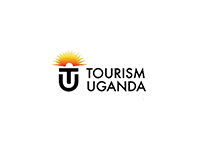Tanzania
Facts about Tanzania
background info
Tanzania is the biggest of the five East African countries and shares a border with all of them. Uganda in the North, Kenya in the North East, Burundi and Rwanda in the North West. Tanzania also shares borders with the Democratic Republic of Congo in the West and Malawi, Zambia and Mozambique in the South. It borders the Indian Ocean to the East. Tanzania has two capital cities, Dar-es-Salam, which is the economic capital and is on the coast with the Indian Ocean, and Dodoma in the central region, which is the legislative capital. Famous for the annual wildebeest migration and big game in large numbers. Tanzania safari trips are the biggest Tanzanian tourism draw because more than a third of the country is set aside for conservation. There are 40 national parks and game reserves.
Time zone; GMT +3hrs
Currency; Tanzania Shillings
Official languages; Kiswahili and English
Population; 55.5 million
Climate; tropical climate around the coast but as you move to the highlands the climate switches to temperate. (April – Mid May is the long rains / green season, June –Sept is the cool season, Nov- Dec is the short rains while Oct – March is the hottest season) Temperatures range from 25 to 30 degrees C at the coast but average temperatures around the country are between 22 and 27 degree C.
Independence/ National holiday; union day 26th April 1964
Main industries; agriculture, manufacturing (wood processing, textile and clothing, leather, plastics, printing and publishing) , mining ( tanzanite and diamonds, gypsum, salt copper, silver ore, phosphate, bauxite, graphite, and tin, gold, nickel), natural gas.
Government type; multiple party republic
Branches; executive, judicial, and legislative
Political parties; Alliance for Change and Transparency/ACT, Alliance for Democratic Change/ADC, National Convention for Construction and Reform/NCCR-M, National League for Democracy,Party of Democracy and Development,Revolutionary Party/CCM,Tanzania Labor Party/TLP,United Democratic Party/UDP.
Natural resources; Apart from wealth in agriculture, forestry and wildlife land, Tanzania is also very rich in minerals such as gold, diamond, iron, coal, nickel, tanzanite, uranium and natural gas.[2] Recently natural offshore gas deposits have been discovered.
TripCare Adventures
Tourism in Tanzania
Travel and Tourism contributed 17.5 percent of Tanzania’s gross domestic product in 2016 and employed 11.0 percent of the country’s labour force (1,189,300 jobs) in 2013. Overall receipts rose from US$1.74 billion in 2004 to US$4.48 billion in 2013, and receipts from international tourists rose from US$1.255 billion in 2010 to US$2 billion in 2016. In 2016, 1,284,279 tourists arrived at Tanzania’s borders compared to 590,000 in 2005. The vast majority of tourists visit Zanzibar or a “Northern circuit” of Serengeti National Park, the Ngorongoro Conservation Area, Tarangire National Park, Lake Manyara National Park, and Mount Kilimanjaro. In 2013, the most visited National Park was Serengeti (452,485 tourists), followed by Manyara (187,773) and Tarangire (165,949). Tanzania has a varied Geography, including deep and large Freshwater and Salt lakes, many National Parks, and Africa’s highest point, Mount Kilimanjaro (5,895 m or 19,341 ft).Northeast Tanzania is mountainous and includes Mount Meru, an active Volcano, Mount Kilimanjaro, a dormant Volcano, and the Usambara and Pare mountain ranges. Kilimanjaro attracts thousands of tourists each year. Further Northwest is Lake Victoria on the Kenya–Uganda–Tanzania border. This is the largest Lake in Africa by surface area and is traditionally named as the source of the Nile River. Lake Victoria covers 69,490 sq km (26,832 sq miles), which is Africa’s largest lake and 49% of it lies in Tanzania. Southwest of this, separating Tanzania from the Democratic Republic of the Congo is Lake Tanganyika. This lake is estimated to be the deepest lake in Africa and second deepest lake in the world after Lake Baikal in Siberia, with maximum depths of 1,470m (4,821ft), and is 673km (420 miles) long.
National parks in Tanzania .
The Serengeti National Park.
Serengeti National Park is undoubtedly the best-known wildlife sanctuary in the world with Nile Crocodile, Bush buck, Bush, Elephant, Grey Crowned Crane and superb starling. Unequalled for its natural beauty and scientific value, it has the greatest concentration of plains game in Africa. Well known for Balloon, Birding and Wildlife Safaris. It is famous for its annual migration of over 1.5 million white-bearded (or brindled) wildebeest and 250,000 zebra and for its numerous Nile crocodile and honey badger.
Arusha National Park.
It covers Mount Meru, a prominent volcano with an elevation of 4566 m, in the Arusha Region of north eastern Tanzania. The park is small but varied with spectacular landscapes in three distinct areas. In the west, the Meru Crater funnels the Jekukumia River; the peak of Mount Meru lies on its rim. Ngurdoto Crater in the south-east is grassland. The shallow alkaline Momella Lakes in the north-east have varying algal colours and are known for their wading birds. It has various attractions like Giraffes, Cape Buffalo, Warthog, Zebra and Black, White and Blue Monkeys. Birding Safaris, Tourism, Mountain, Walking Safaris, Wildlife Safaris are common activities carried out here.
Lake Manyara National Park.
This Tanzanian National Park is located both in Arusha Region and Manyara Region, Tanzania. The park consists of 330 km2 (130 sq mi) of arid land, forest, and a soda-lake which covers as much as 200 km2 (77 sq mi) of land during the wet season but is nearly nonexistent during the dry season. It is known for the flamingos that inhabit the lake. During the wet season, they inhabit the edges of the lake in flocks of thousands but they are not so present during the dry season. More than 400 species of birds inhabit the park and many remain throughout the year. Leopards, lions, cheetahs, elephants, blue monkeys, dik-dik, gazelles, hippopotami, Masai giraffe, impala, zebras, and many more wild animals inhabit this park and many can be seen throughout the year. Birding Safaris, Boating and Canoeing, Horse and Camel Riding, Mountain Biking, Wildlife Safaris are mostly done in this Park.
Kilimanjaro National Park.
It is located 300 kilometres (190 mi) south of the equator and in Kilimanjaro Region, Tanzania. The park is located near the city of Moshi.[3] The park includes the whole of Mount Kilimanjaro above the tree line and the surrounding montane forest belt above 1,820 metres, highest freestanding mountain in the world, world’s tallest summit that can be climbed without technical equipment.
Tarangire National Park.
Tarangire National Park has some of the highest population density of Elephants as compared to anywhere in Tanzania as well as Zebras, Cape Buffaloes, and its sparse vegetation, strewn with baobab and Acacia trees, makes it a beautiful. It is commonly known for Balloon Safaris, Safaris, and Wildlife Safaris.
Game Reserves and other Protected sites.
- Ngorongoro Conservation Area. Has many archaeological and paleontological sites like Olduvai Gorge, Laetoli, Lake Ndutu.
- Selous Game Reserve. the largest game reserve in Africa; 350 bird species
- Uwanda Game Reserve
- Mafia Island Marine Park. It has coral reefs, seagrass beds, mangroves, intertidal flats, coastal forest
- Mnazi Bay-Ruvumba Estuary Marine Park
ACTIVITIES
- Mountain Climbing
- Canoeing
- Birding
- Cruises
- Horse Riding
- Rafting
- Scuba Diving
- Primate Watching
- Camping
- Water Sports
- Fishing
- Beach & Island Holidays
- Wildlife Safaris
- Honeymoon Holidays Africa
- Kayaking
Towns; Popular Tourist Towns and Cities include; Arusha, Bagamoyo, Dar es Salaam, Dodoma, Iringa, Karatu, Kigoma, Kilwa, Mbeya, Mikindani, Morogoro, Moshi, Mtwara, Musoma, Mwanza, Njombe, Pangani, Tabora, Tanga
Culture and social scene; The nightlife in Tanzania especially Dar es Salaam, has got a lot to offer the fun-loving adventurer. Some of these bars and nightclubs include
- High Spirit Lounge Bar;
Kicking off the list of Tanzania nightlife is this hip and happening bar located at the top of the IT Mall Building. The beautiful views of the ocean, especially during the nighttime, give this place a very chill and relaxed vibe, perfect for a romantic evening or any other special occasion. - Q Bar;
This is one of the few Tanzania nightlife bars where you can buy some really good yet affordable drinks. Located in a hotel where you can also rent rooms, this popular tourist bar was built in the year 1997 with a purpose to provide a space for people to unwind and relax while enjoying some good drinks and great food, and 20 years later, they still stick true to their motto. - Jozi Lounge;
This is a more upbeat and youthful nightclub and if you are pumped up with energy and want to let it all on the dance floor, this is the best place for you to go to. The spacious nightclub has a relaxed seating area and an interesting variety of food, as long as some great beers, wines, and other cocktails as well. There are regular DJ nights, karaoke nights and disco lights which are very popular here, and the amazing light display is another great thing which makes this one of the best Tanzania nightclubs. - The Slow Leopard;
If you are a sports fanatic and are wondering what to do in Tanzania at night, then think no more and head over to this super relaxed and laid back bar in Dar es Salaam. - Kilimanjaro Casino;
To experience some of the best nightlife in Tanzania, head over not to a bar, or a nightclub, but to an exciting casino situated in the Hyatt hotel in Dar es Salaam. - The Waterfront Sunset Restaurant & Beach Bar;
This is one of those Tanzania nightlife bars by the beach where you can definitely kick back and relax while enjoying a drink or two along with some great food and even greater views of the ocean.
Level 8;
If you are looking for a bar which is quite calm and relaxed, and a place to just unwind after a long day, or have a nice romantic dinner at, then this quaint place is the bar to be. They are quite small but offer great views and a nice, cosy menu of food and drinks. Their cocktails, especially, are quite commendable, and you are definitely bound to find something you love in their wide range of cocktails.
Shopping; As a general rule, you’re much more likely to find a bargain at a local market as opposed to in a shopping centre or craft shop frequented by tourists. The main shopping area of Dar es Salaam is to be found along Samora Machel Avenue. In and around this part of the city, visitors will find plenty of shops to peruse for some last-minute souvenirs, including printed cotton fabrics and local paintings. A cheaper option for souvenir searching is to visit one of Tanzania’s many indigenous markets. In Dar es Salaam, the largest local market is the vast Kariakoo Market, selling locally grown fresh produce (fruits and vegetables) and spices as well as some textiles and handcrafts. Although safe to explore, keep in mind that it can get very crowded. Visitors can also pick up hand-carved souvenirs at the Mwenge Carvers’ Market, located opposite the Village Museum. The Msasani Slipway Weekend Craft Market is a more expensive option, although it’s a much quieter affair, making it easier to browse in relative peace.
Some of the best shopping malls include ;
- Slipway shopping centre, Seacliff village, Quality centre mall, Shoppers Plaza, Mlimani City in Dar es Salaam
- AIM Mall in Arusha
- Rock city Mall in Mwanza
- Maasai Market curious and crafts
- Kibo Tower in Moshi
- Msasani Mall in Msasani.
Accommodation; Tanzania has some of the best luxury tourist hotels and accommodation facilities in East Africa and most hotel prices are holding steady in the country.
Some hotels in Dar es Salaam include:
- Southern Sun Hotel
- Ramada Resort
- Sea Cliff Hotel
- Best Western CBD Hotel
- The Kilimanjaro
- Serena Hotel
- Best western coral beach Hotel
- Alexander’s Hotel
Some hotels on the Zanzibar listing include:
- The Residence
- Tembo House Hotel and Apartments
- Warere Town House
- Double Tree by
- Hilton Resort
- Hotel Riu
- Zanzi Resort
Other impressive and comfortable hotels in Tanzania include; Hyatt Regency Hotel, Protea Hotel by Marriott, Colosseum hotel, The Oyster Bay Hotel, and many others.
Our Affiliations





